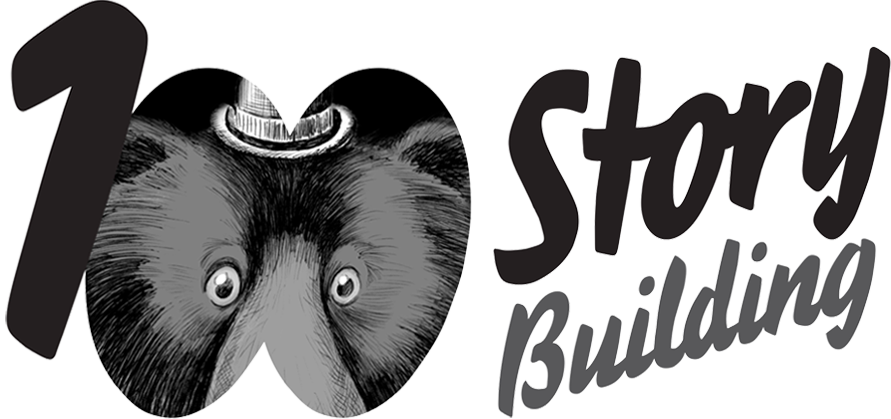The 100 Story Building Approach: A Hero’s Backpack
As part of our Geelong Spark project, teachers learned how to implement 100 Story Building’s approach in their own classrooms. Like all our professional learning programs, it was experiential and creative, not a one-way lecture. Teachers observed our facilitators delivering workshops, and then worked with us to co-design classroom activities.
As anyone who has gone on a perilous quest with us knows, every hero setting out on a new journey needs to pack some tools and technique in their backpack to help them along the way. Here are a few of the tools we shared with Geelong teachers, to help them increase student engagement, encourage creative risk-taking, and improve literacy outcomes.
1. Give the lesson a story starter or ‘hook’ so that students are motivated from the get-go.
All of our workshops are based around a story starter idea. Sometimes, we are going off on a perilous quest. Other times it’s a space adventure, or solving mysteries down a trapdoor! Of course, we never really leave the classroom. But having a story behind the lesson helps students identify a purpose for their writing. It gives them (and their characters) motivation, offers ideas, and provides an audience to write for (even if it is just their classmates at the end of the session).
Having a ‘hook’ offers students a jumping-off point for world-building, and allows them to spin that story prompt off into any direction. This ensures that students (and teachers) always have something that generates ideas, which keeps them motivated and engaged throughout the task.
2. Embody what you’re asking the students to do.
When you are creating activities, make sure you test them out yourself so that you understand what you are asking your students to do. It’s not about perfecting your drawing skills or plot devices, it’s about experiencing how the lesson feels. Creativity is vulnerable, and children feel just as vulnerable as adults when they are sharing ideas. Going through the activity yourself helps you learn where your students might get stuck, confused, or nervous so that you can iron out the kinks.
3. Get drawing!
Using drawing when you are modelling activities in front of the class can be nerve-wracking, but it gives you a chance to show your students that creativity makes you feel vulnerable, too. Showing yourself making mistakes in your drawing proves to your students that trial and error is a part of the creative process, and encourages them to take creative risks in their own stories.
Visual planning is also faster, more effective, and more fun than written plans. We use comics a lot in our workshops, which students can then transform into a written story if they wish. Drawing helps to get the skeleton of an entire story onto the paper, and offers visual cues that allow you to ask the student questions about their character, plot, and setting, so that you can help them build a better story.
The 100 Story Building approach always boils down to validating and celebrating students’ ideas. This develops creative safety, and proves one very important thing to students: your ideas matter. And when students believe that their ideas matter, they get excited to write stories. When they know that their ideas will be supported, they are willing to take more creative risks. With that comes increased confidence, a better sense of belonging, and improved literacy outcomes.
—
Interested in learning more about how to creatively engage your students and improve outcomes? Our professional learning workshops help you plan activities that fit your classroom’s needs and curriculum. Click here for more information and to book.
